Envision Math Grade 8 Volume 1 Student Edition Solutions Chapter 1 Real Number Exercise 1.10
Page 67 Question 1 Answer
Given that, the homecoming committee wants to fly an aerial banner over the football game. The banner is 1,280 inches long and 780 inches tall. We need to find the number of different ways can the area of the banner be expressed.
The given banner is a rectangle.
The area of the rectangle is given by the formula,
A = l × b
where l = length and b = breadth.
Thus, the area in standard form will be,
A = 1280 × 780 = 998,400
The area can also be represented in scientific notation will be,
A = 998,400 = 9.98 x 105
The area of the banner is expressed in two different ways. In standard form as 998,400 and in scientific notation as 9.98 × 105
Envision Math Grade 8 Volume 1 Chapter 1 Exercise 1.10 Real Number Solutions
Page 68 Exercise 1 Answer
We need to determine what does the exponent tell you about the magnitude of the number.
Scientific notations make calculations easier by writing very large or very small numbers into their compact form.
For example, 0.0000005
This can be represented as 5 × 10-7
In this way, we can rewrite large or small values into very compact forms using scientific notations.
The solutions in scientific notation are easiest to manipulate since it is easier to multiply values between one to ten and then using the exponent properties of power of 10 rather than multiplying the number in standard form with lots of zeroes in it.
Here, the exponent is negative this means that the magnitude is very small. If it was positive, then it denotes that the magnitude is large.
If the exponent is negative, then the magnitude of the number is very small.
If the exponent is positive, then the magnitude of the number is very large.
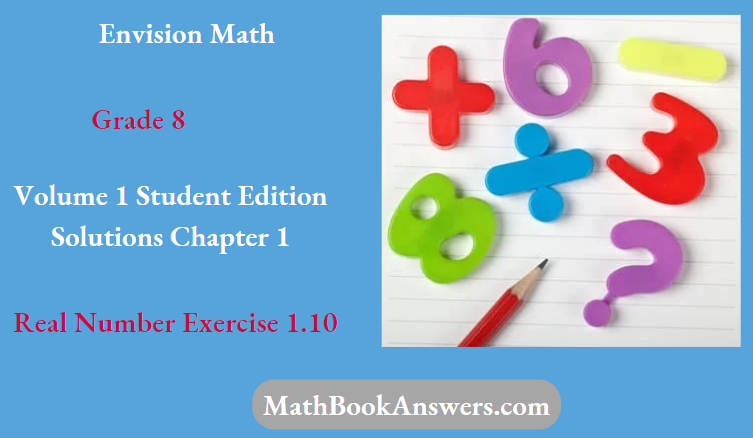
Envision Math Grade 8 Volume 1 Student Edition Solutions Chapter 1 Real Number Exercise 1.10 Page 68 Exercise 1 Answer
Given that, the planet Venus is on average 2.5 × 107 kilometers from Earth. The planet Mars is on average 2.25 × 108 kilometers from Earth. When Venus, Earth, and Mars are aligned, we need to find the average distance from Venus to Mars.
The planet Venus is on average 2.5 × 107 kilometers from Earth.
The planet Mars is on average 2.25 × 108 kilometers from Earth.
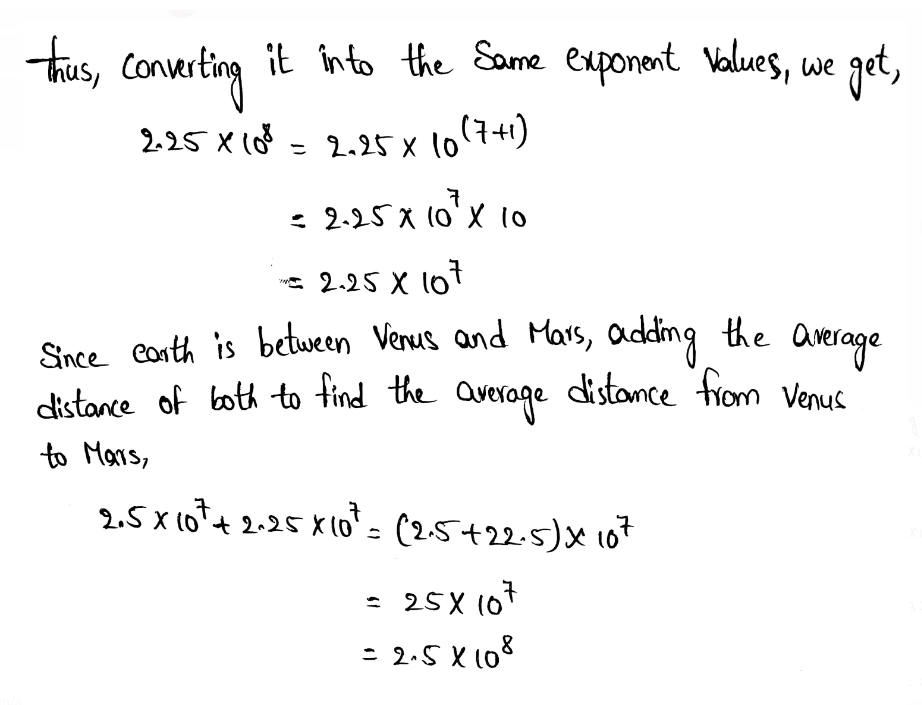
The average distance from Venus to Mars is 2.5 × 108 kilometers.
Page 69 Exercise 2 Answer
Given that, there are 1 × 1014 good bacteria in the human body. There are 2.6 × 1018 good bacteria among the spectators in a soccer stadium. We need to find the number of spectators are in the stadium. Also, we need to express our answers in scientific notation.
To find the number of spectators, divide the good bacteria among the spectators by the good bacteria in the human body, we get,
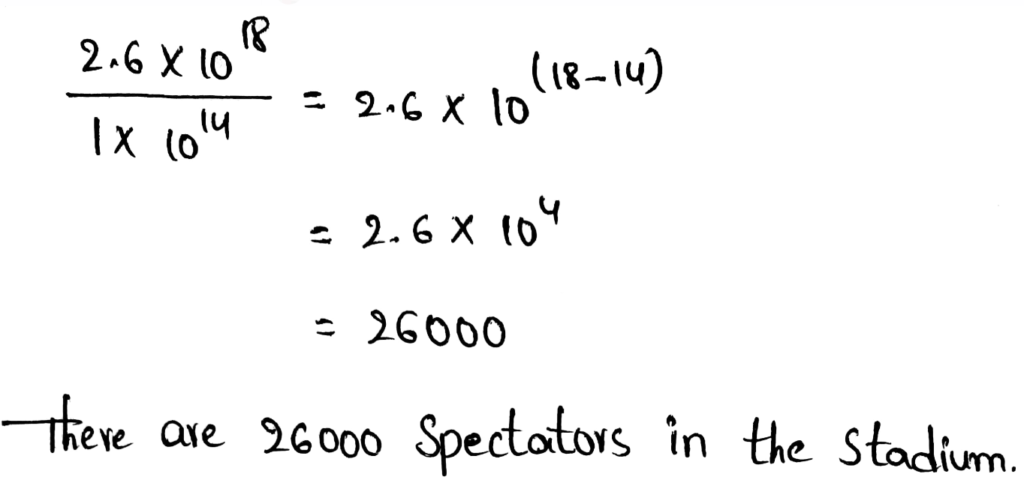
There are 26000 spectators in the stadium.
There are 26000 spectators in the stadium. The number in scientific notation will be 2.6 x 104
Page 68 Exercise 1 Answer
In Example 1 and the Try It, we need to find why we moved the decimal point to get the final answer.
In Example 1, the answer obtained is 589.65 × 1022
It was rewritten as 5.8965 × 1024
In Try It, the answer obtained is 25 × 107
It was rewritten as 2.5 × 108
In both cases, we moved the decimal point to get the final answer.
The number in scientific notation will have two factors.
The first factor will have values between one and ten.
The second factor will be the power of ten.
Thus, to make it as a value between one and ten for easier calculation, we moved the decimal points.
The first factor in the scientific notation must be greater than or equal to one and less than 10.
This is why we have moved the decimal point to get the final answer.
Envision Math Grade 8 Student Edition Exercise 1.10 Real Numbers Answers
Envision Math Grade 8 Volume 1 Student Edition Solutions Chapter 1 Real Number Exercise 1.10 Page 70 Exercise 1 Answer
We need to explain how does using a scientific notation help when computing with very large or very small numbers.
Scientific notations make calculations easier by writing very large or very small numbers into their compact form.
For example, 0.00005
This can be represented as 5 × 105
In this way, we can rewrite large or small values into very compact forms using scientific notations.
The solutions in scientific notation are easiest to manipulate since it is easier to multiply values between one to ten and then using the exponent properties of power of 10 rather than multiplying the number in standard form with lots of zeroes in it.
Scientific notation is a convenient way to write very large numbers or very small numbers. Also, the solutions in scientific notation are easiest to manipulate.
Page 70 Exercise 3 Answer
For the sum of (5.2 × 104) and (6.95 × 104) in scientific notation, we need to find why will the power of 10 be 105
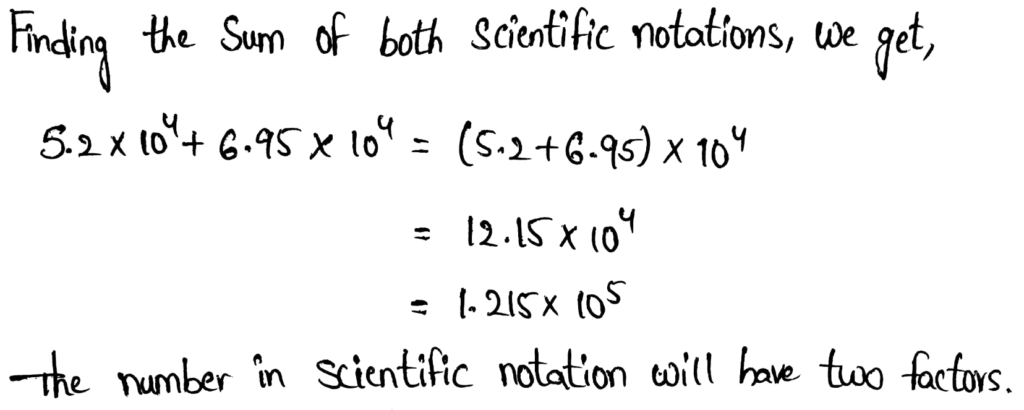
The first factor will have values between one and ten.
The second factor will be the power of ten.
Since the number obtained in the first factor is more than the number 10, we need to change the power of 10 to make the number less than 10.
The number obtained in the first factor is more than the number ten, that’s why we converted the power of 10 be 105 to make the first factor in the scientific notation to be less than 10.
Page 70 Exercise 6 Answer
Given that, the mass of Mars is 6.42 × 1023 kilograms. The mass of Mercury is 3.3 × 1023 kilograms.
We need to find the combined mass of Mars and Mercury expressed in scientific notation.
Adding both the masses together, we get,
6.42 × 1023 + 3.3 × 1023 = (6.42+3.3) × 1023
= 9.72 × 1023
The combined mass of Mars and Mercury is 9.72 × 1023
Given that, the mass of Mars is 6.42 × 1023 kilograms. The mass of Mercury is 3.3 × 1023 kilograms.
We need to find the difference in the mass of the two planets expressed in scientific notation.
Subtracting both the masses together, we get,
6.42 × 1023 − 3.3 × 1023 = (6.42 − 3.3) × 1023
= 3.12 × 1023
The difference in the mass of the two planets expressed in scientific notation is 3.12 × 1023
Envision Math Grade 8 Volume 1 Student Edition Solutions Chapter 1 Real Number Exercise 1.10 Page 71 Exercise 7 Answer
We need to perform the below operation and express our answer in scientific notation.
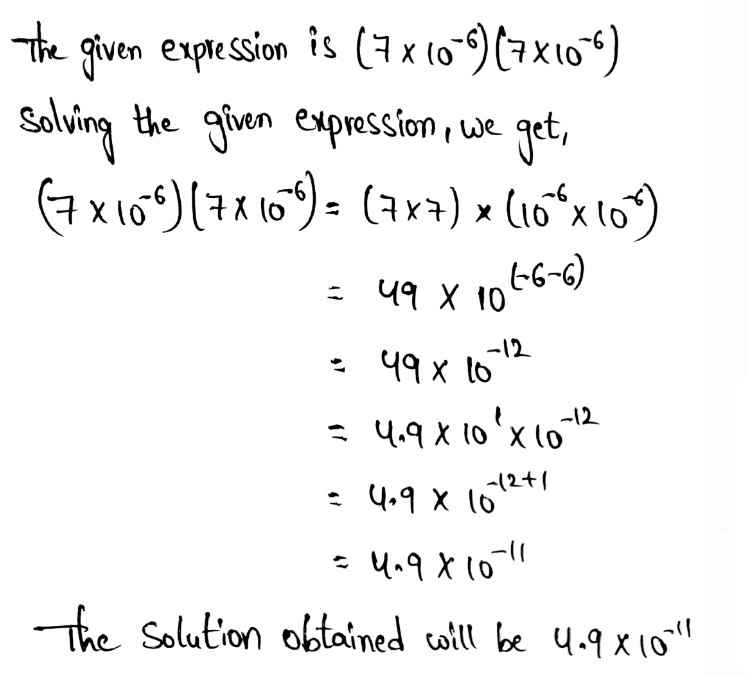
The solution obtained will be 4.9×10-11
Page 71 Exercise 8 Answer
We need to perform the below operation and express our answer in scientific notation.
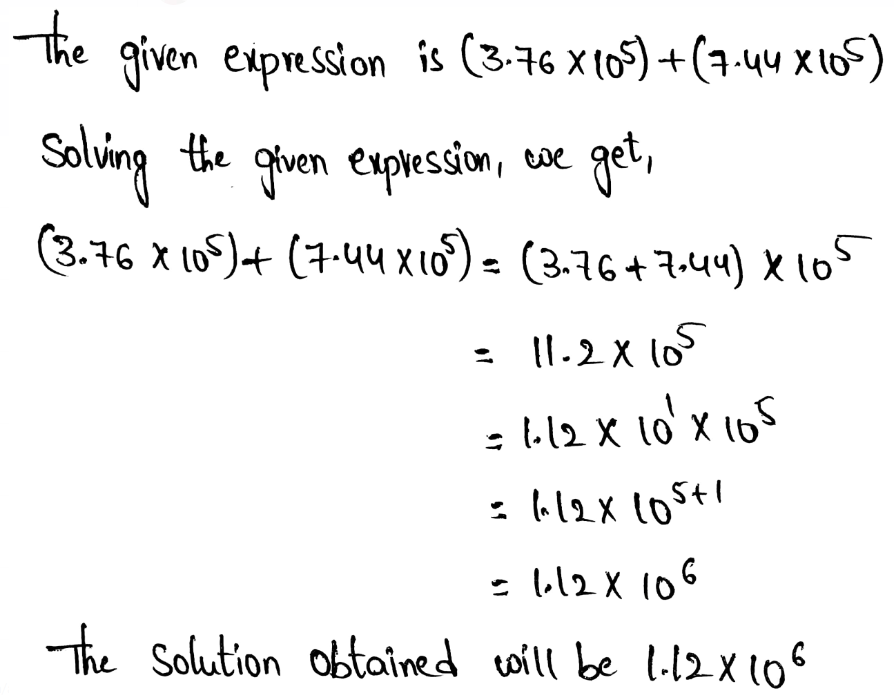
The solution obtained will be 1.12×106
Page 71 Exercise 9 Answer
We need to find the value of n in equation 1.9 × 107 = (1 × 105)(1.9 × 10n)
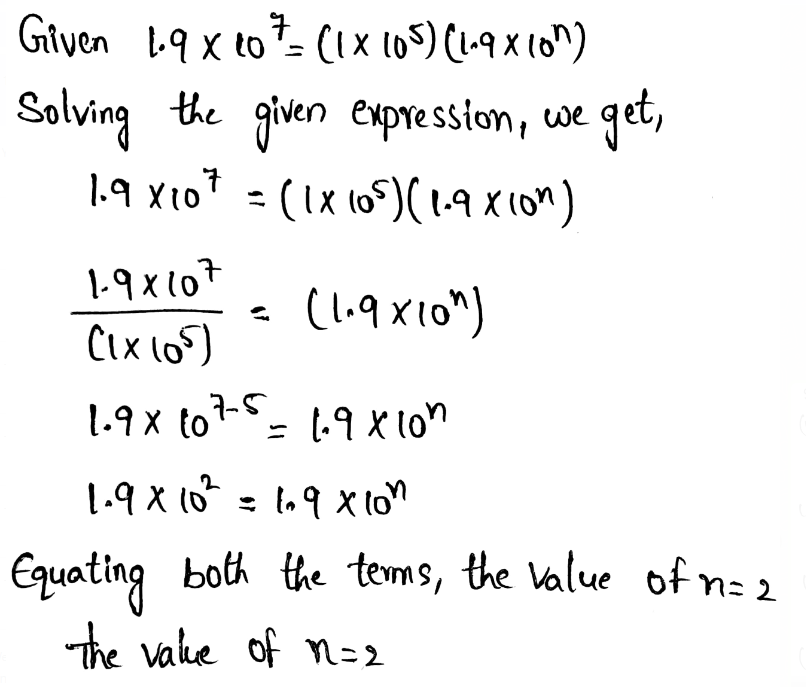
The value of n = 2
Envision Math Grade 8 Volume 1 Student Edition Solutions Chapter 1 Real Number Exercise 1.10 Page 71 Exercise 10 Answer
We need to find the value of (5.3 × 103) − (8 × 102). Also, we need to express the answer in scientific notation.
Solving the given expression, we get,
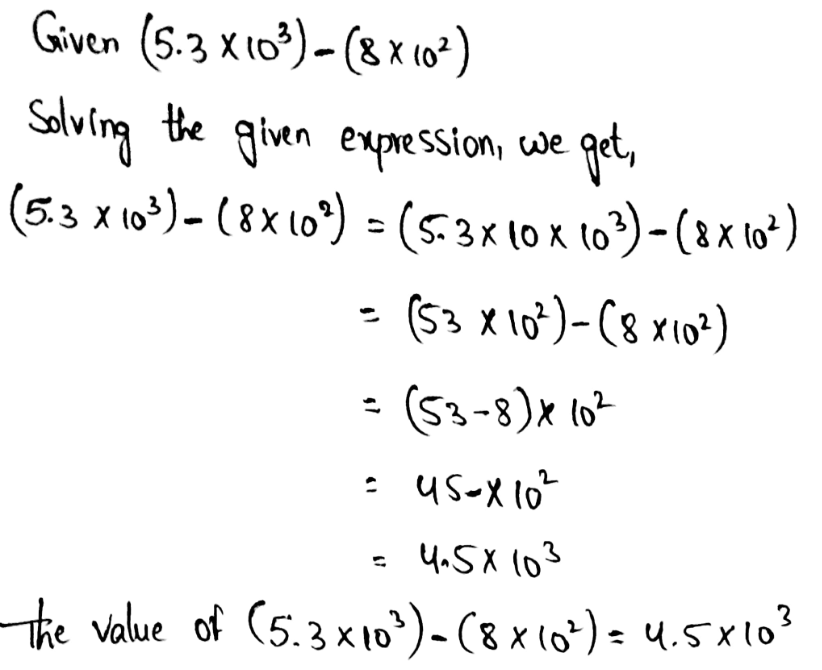
The value of (5.3 × 103) − (8 × 102) = 4.5 × 103
Real Number Solutions Grade 8 Exercise 1.10 Envision Math
Page 71 Exercise 11 Answer
We need to find the mass of 30,000 molecules. Also, we need to express the answer in scientific notation.
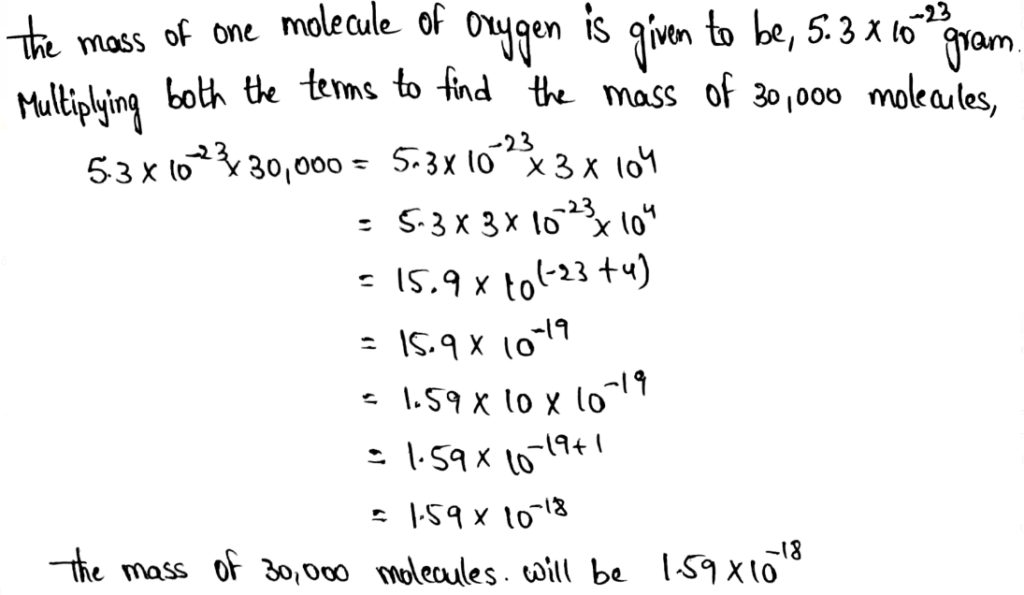
The mass of 30,000 molecules will be 1.59 × 10−18
Page 71 Exercise 12 Answer
Your friend says that the product of 4.8 × 108 and 2 × 10-3 is 9.6 × 10-5
We need to find out whether the answer is correct or not.
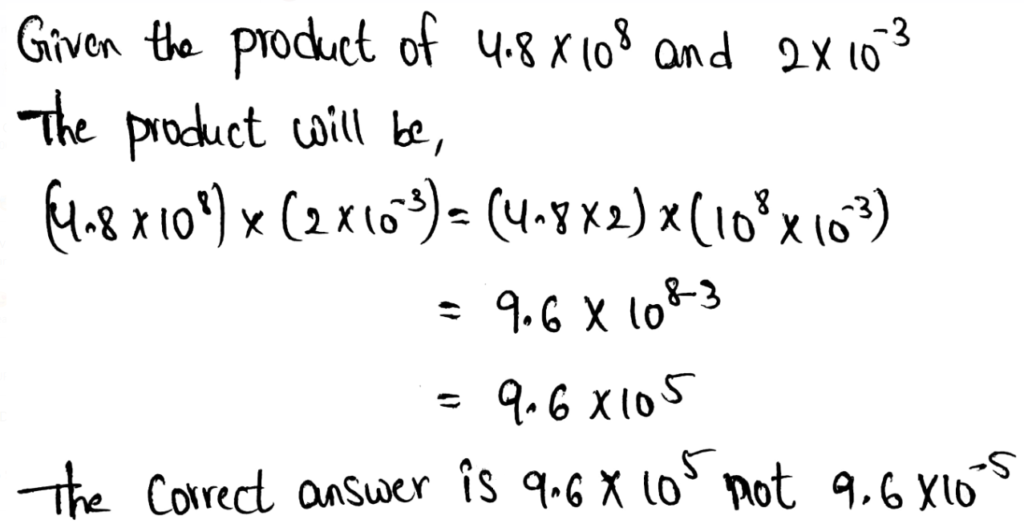
Thus, it is wrong.
My friend’s calculation is incorrect.
Envision Math Grade 8 Volume 1 Student Edition Solutions Chapter 1 Real Number Exercise 1.10 Page 71 Exercise 13 Answer
We need to write the answer in scientific notation.

Solving the given expression, we get,
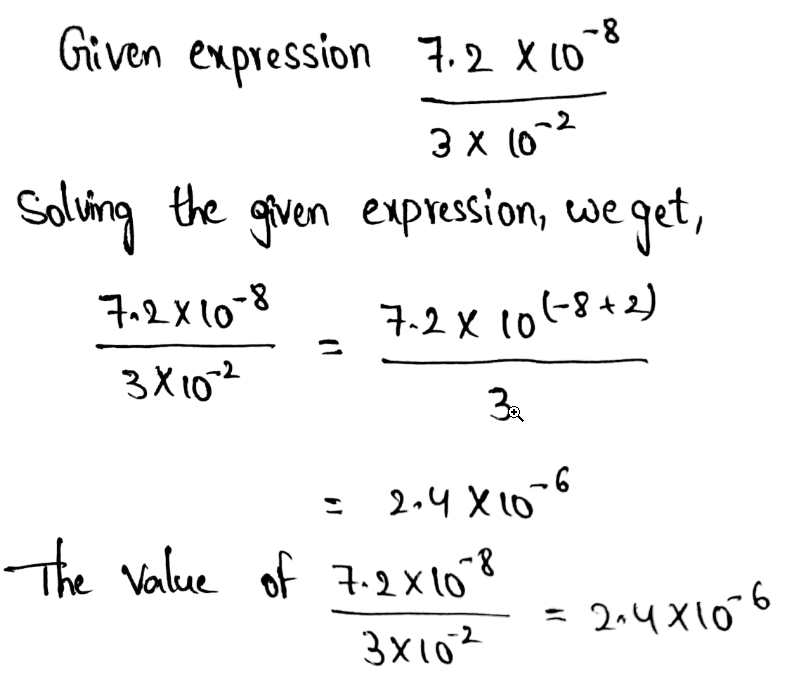
Page 71 Exercise 14 Answer
Given that, A certain star is 4.3 × 102 light years from Earth. One light year is about 5.9 × 1012 miles. We need to find how far from Earth (in miles) is the star. We need to express our answer in scientific notation.
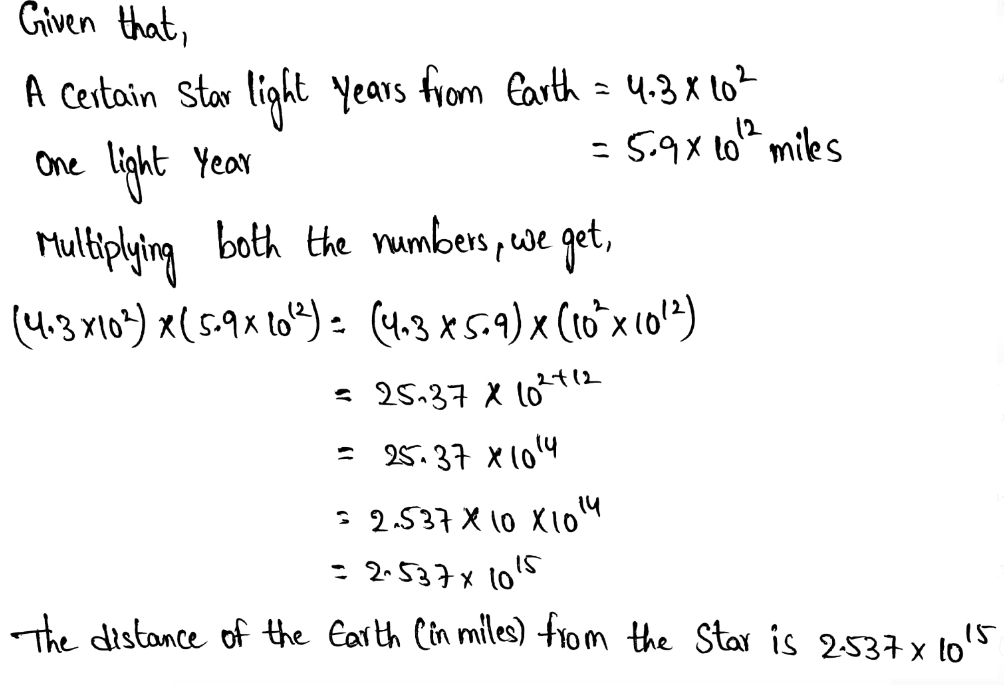
The distance of the Earth (in miles) from the star is 2.537 × 1015
Page 72 Exercise 15 Answer
Given that, the total consumption of fruit juice in a particular country in 2006 was about 2.28 × 109 gallons. The population of that country that year was 3 × 108
We need to find the average number of gallons consumed per person in the country in 2006.
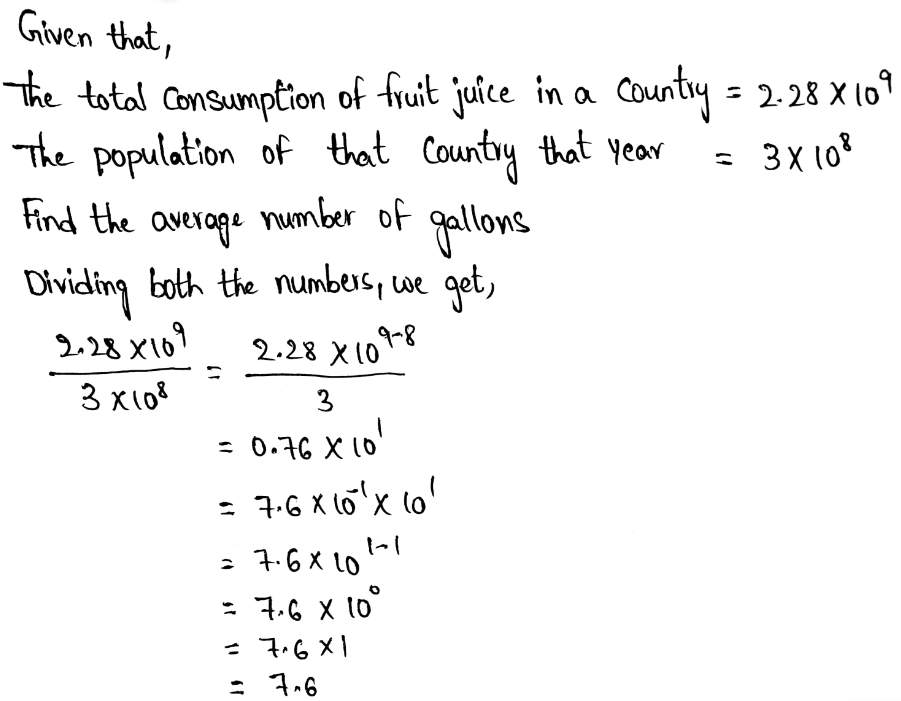
The average number of gallons consumed per person in the country in 2006 is 7.6 gallons.
Envision Math Grade 8 Chapter 1 Exercise 1.10 Solutions
Envision Math Grade 8 Volume 1 Student Edition Solutions Chapter 1 Real Number Exercise 1.10 Page 72 Exercise 16 Answer
Given that, the greatest distance between the Sun and Jupiter is about 8.166 × 108 kilometers. The greatest distance between the Sun and Saturn is1.515 × 109 kilometers. We need to find the difference between these two distances.
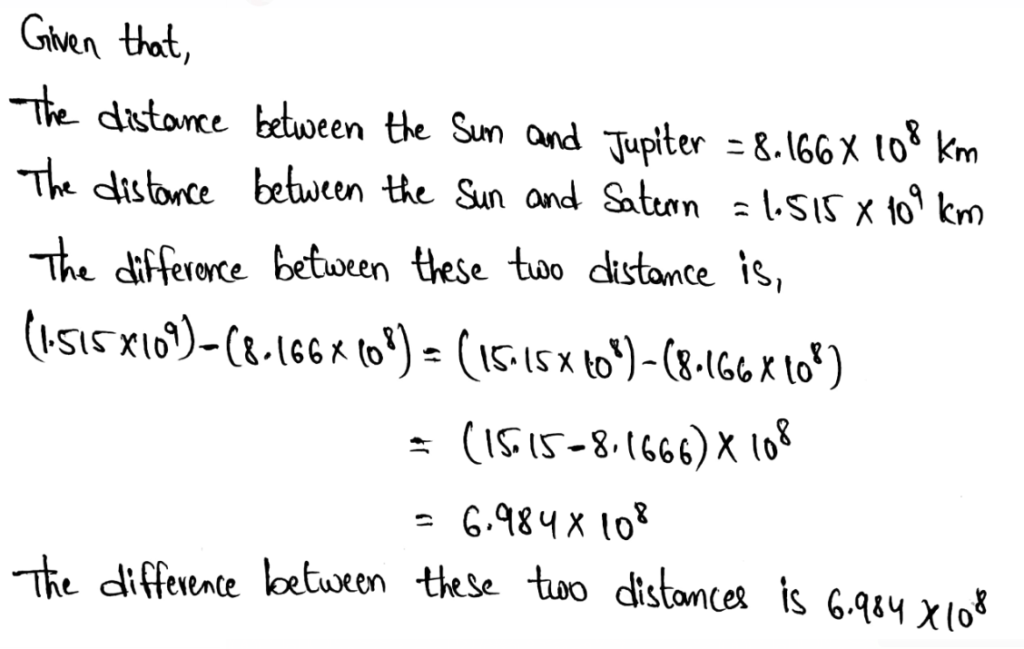
The difference between these two distances is 6.984 × 108
Page 72 Exercise 18 Answer
We need to find the value of n in equation 1.5 × 1012 = (5 × 105)(3 × 10n)
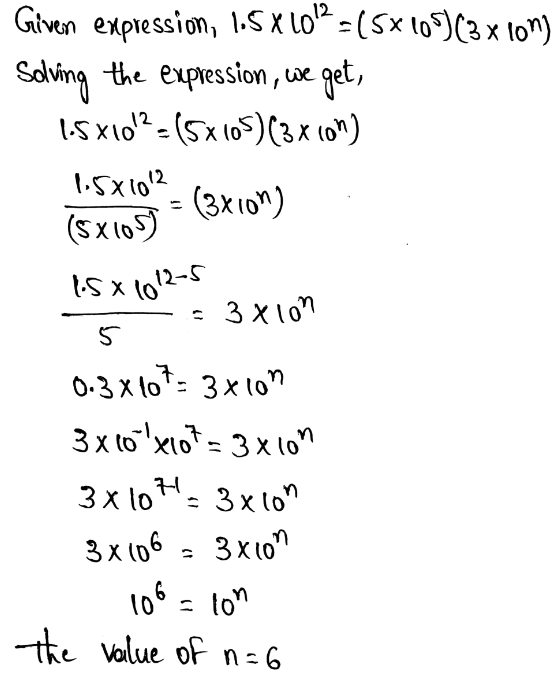
The value of n = 6 in the given expression.
We need to explain why the exponent on the left side of the equation is not equal to the sum of the exponents on the right side.
The given expression is,
1.5 × 1012 = (5 × 105)(3 × 10n)
1.5 × 1012 = 15 × 105+n
If the number is larger than one, we need to add one into the exponent for each space we moved the decimal point.
Thus, we get,
1.5 × 1012 = 1.5 × 101 × 105+n
1.5 × 1012 = 1.5 × 105+n+1
Hence, we can show in above step the exponent on the left side of the equation is not equal to the sum of the exponents on the right side.
Page 72 Exercise 19 Answer

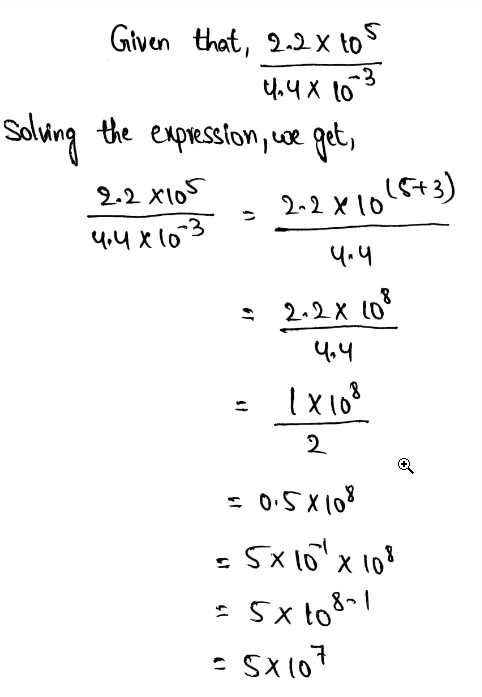
The quotient of the decimal factor is less than one.
Thus, we need to subtract one from the exponent of ten for each space we move our decimal point to the right.
The value obtained is 5 × 107 The quotient of the decimal factor is less than one. Thus, we need to subtract one from the exponent of ten for each space we move our decimal point to the right.
Envision Math 8th Grade Exercise 1.10 Step-By-Step Real Number Solutions
Envision Math Grade 8 Volume 1 Student Edition Solutions Chapter 1 Real Number Exercise 1.10 Page 72 Exercise 20 Answer
We need to find which of the given equation(s) are true.
Solving it one by one, we get,

The correct equations are
(A) (4.7 × 104) + (8 × 104)
(D) (9.35 × 106) − (6.7 × 106)
